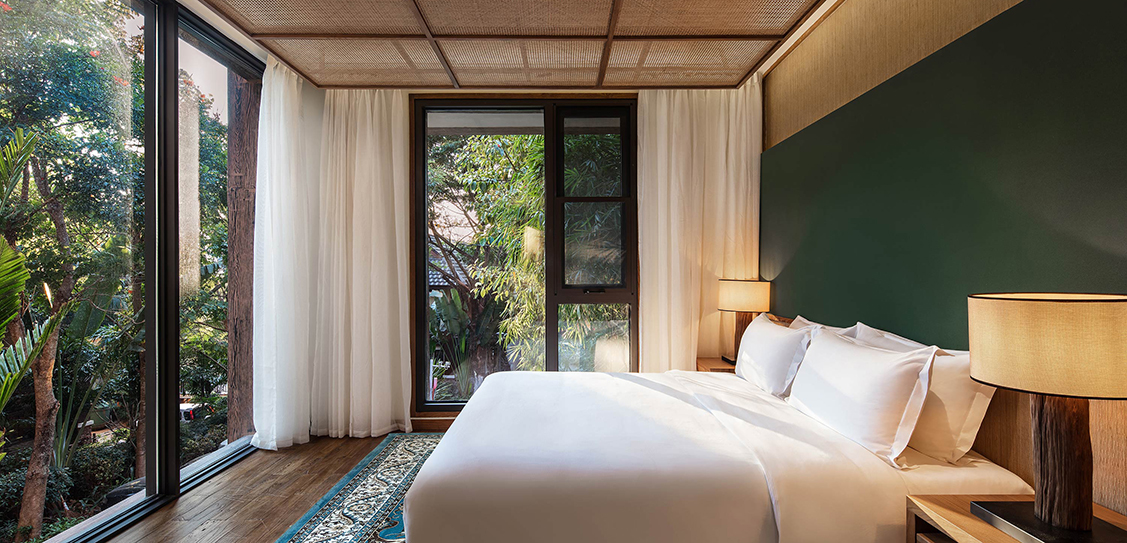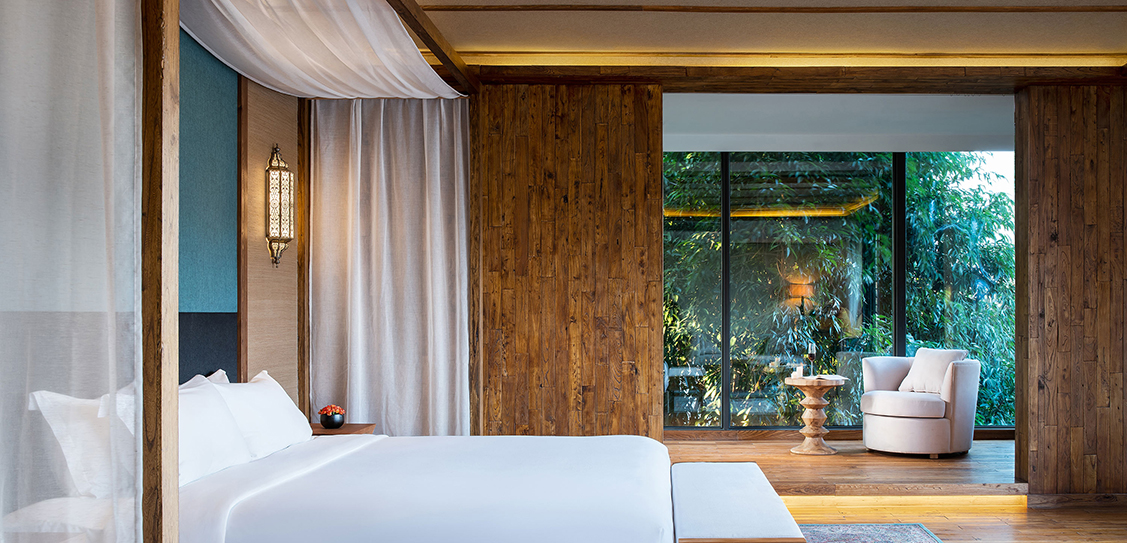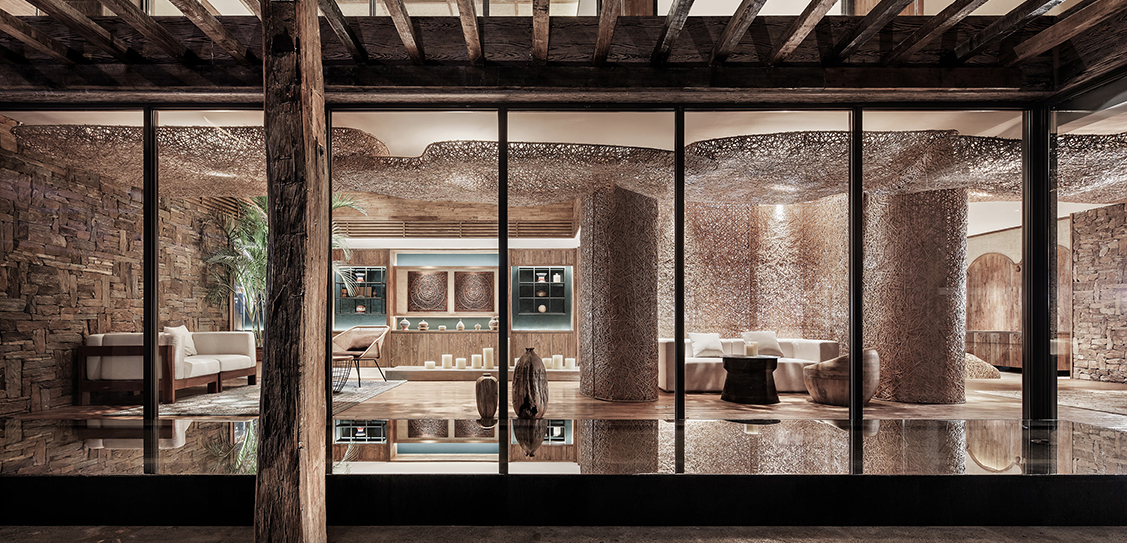Its position up to a 40 m high cliff is settled into a verdant vista and an emerald expanse of forests.
The totality of exteriors and interiors is conceived by Zhang Can. From its inception to substantial completion, Oxyrest Villa has undergone a rejuvenating metamorphosis of its trio of old buildings.
To acknowledge the vulnerability of the ecosystem, the designer has extended with a minimal amount of disruption. The leitmotif of designs is geared towards establishing an agreeable rapport between the architecture of the hotel and the ambient conditions.
This resort hotel, which looks like a glass block hanging in the sky, is opposite to a dense forest and equipped with an aerial view of huge rubber trees.
Oxyrest Villa is derived from local materials to establish a harmony with its environment. Wood-frame corridors serve as transitional conduits for customers to move freely from one segment to another.
In the foyer intricate bamboo-woven stuffs, burma-teak-and-elm structures, and bricks, build up a strong sense of localisation into the interiors.
Zhang Can is a committed advocate for utilising light, shadow and scenes to exert subtle influence on people’s perception of the space. Upon closer observation, you would be likely to find that numerous seams are one of the most important attributes of the bamboo-workings. The seams allow sunbeams through leaving shaky split-apart scintillating patterns on the floor. In addition, the broadness of the seams is a metaphorical allusion to a quality of being free of limits and trammels.



